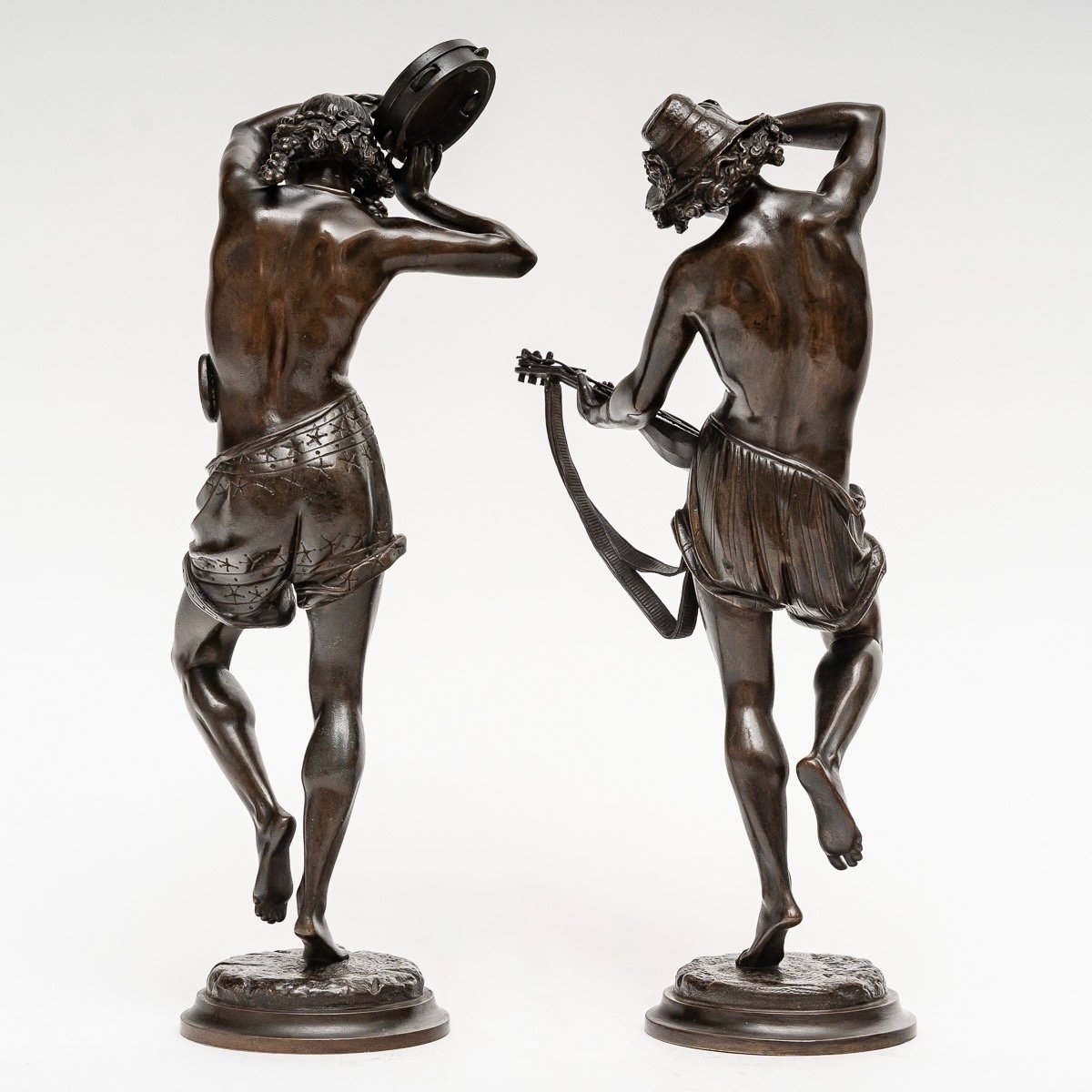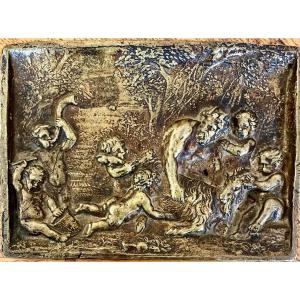Bronze proofs with brown patina .
Signature of the sculptor " A . CARRIER ", in hollow , on the two oval terraces , naturalists .
XIXth century period , Circa 1880 .
Very good state of preservation and patina .
Albert - Ernest Carrier - Belleuse (1824-1887)
Albert - Ernest Carrier - Belleuse said Carrier - Belleuse , born in Anizy-le-Château on June 12 , 1824 and died in Sèvres on June 3 , 1887 , is a French sculptor .
Carrier - Belleuse was one of the most prolific artists of the century and had the greatest success during the Second Empire , benefiting from the personal support of Napoleon III .
His work was greatly influenced by the style of the Italian Renaissance and that of the 18th century , which he helped bring up to date .
In 1837 , Carrier - Belleuse entered an apprenticeship in the Atelier du ciseleur Bauchery .
He was admitted soon after to the goldsmith Jacques Henri Fauconnier .
Through François Arago , he met the sculptor David d'Angers who facilitated his admission to the School of Fine Arts .
Carrier-Belleuse entered it in 1840 .
Noted for his skill by the great bronze houses of Paris such as Barbedienne and Denière , he soon received numerous commissions .
In 1848 , probably on the initiative of François Arago who had become Head of State , he received his first public commission for a small statue of " Mademoiselle Rachel singing La Marseillaise " .
In 1851 , he appeared for the first time at the French Artists Fair , where he exhibited two bronze medallions .
From 1851 to 1855 , Carrier-Belleuse stayed in England , in Stoke-on-Trent , where he held the position of director of the school of modeling and drawing at Mintons , a large porcelain factory .
Back in France , Carrier-Belleuse moved to Paris in a large studio located at 15 rue de la Tour d'Auvergne .
From 1857 , he made regular shipments to the Salon and achieved notoriety thanks to the success of large marbles , such as " La Bacchante " exhibited at the Salon of 1863 , and acquired by Napoleon III , " Angelica " (1866) or even " Hébé Asleep " (1869) .
At the Salon of 1867 , his group entitled " The Messiah " earned him the medal of honor for sculpture .
It was later acquired by the State to adorn the Chapel of the Virgin in the Church of Saint-Vincent-de- Paul .
Carrier - Belleuse at the same time acquired a great reputation for his terracotta busts which , in many respects , recall those of 18th century artists .
He employs and trains in his studio in rue de la Tour d'Auvergne many talented young artists , including Alexandre Falguière , Jules Desbois , Eugène Delaplanche , Jules Dalou and Joseph Chéret ; but he is best known for having been the master of Auguste Rodin who entered his studio as a practitioner in 1864 .
Carrier-Belleuse devoted himself extensively to decorative sculpture .
He contributed to the decorations of many important buildings , such as the Caryatids of the Renaissance theatre , the pediment of the main entrance to the Banque de France , the stucco ceilings of the pavilions , the frieze of the Palais de la Bourse in Brussels , and even the decoration of the Hôtel de la Païva on the Champs-Elysées in Paris . He also received state commissions for numerous monuments .
In 1873 , Carrier - Belleuse participated in the construction of the Paris Opera led by his friend Charles Garnier , he made the two monumental torchieres which flank the grand staircase , in the main hall and the caryatids of the chimney of the grand foyer .
In 1875 , he was appointed director of the works of art of the Manufacture de Sèvres , he imprinted there a very modern impulse which is manifested by the creation of a complete range of vases .
The new forms imagined by the sculptor such as those of the " Saigon " vase , the " Fizen " vase or the " Mycenae " vase met with great success at the exhibitions of the Central Union of Decoratives Arts in 1884 .
Carrier - Belleuse died at the age of 62 , at the Manufacture de Sèvres , on June 3 , 1887.
He will be buried in the cemetery of Saint-Germain-en-Laye .
An artist with a fertile imagination , nicknamed " The Clodion of the Second Empire " by the Goncourt brothers , he will remain one of the precursors of Art Nouveau .

























 Le Magazine de PROANTIC
Le Magazine de PROANTIC TRÉSORS Magazine
TRÉSORS Magazine Rivista Artiquariato
Rivista Artiquariato
